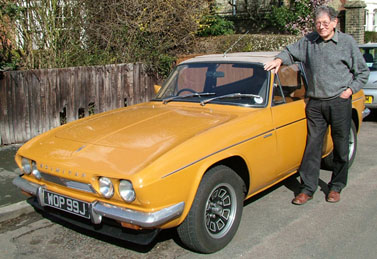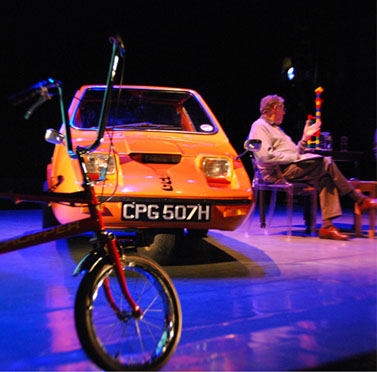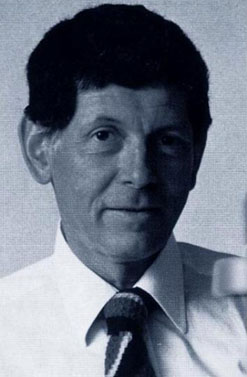Dr Tom Karen
Public Orator, Professor Mark Porter, presented the Honorary Graduand at the Degree Congregation held on the morning of Tuesday 17 July 2001
Chancellor, Vice-Chancellor, Lord Lieutenant, Ladies and Gentlemen, Graduands.
Although Tom Karen was born in Vienna, he spent his childhood years in Czechoslovakia. One Grandfather was an industrialist and the other was a highly regarded portrait painter. With a gene pool like this, it is not surprising that Tom Karen became a highly successful industrial designer.
As a young child, Tom loved cars, planes, cars, ships and cars! When he was only 2 years old, he could recognise 12 different makes of car. He proudly told me that his Nanny once won 500 Crowns from a bet with a friend of hers who doubted his ability.
He left Czechoslovakia in 1939 and arrived in the UK in 1942, via Belgium, France, Spain and Portugal. He studied Aeronautical Engineering at Loughborough College and, for the next 10 years, he worked in the aircraft industry. By this time, he recognised that he was much more interested in design than mathematics, so he went to study industrial design in London. After two terms of study, and some evening classes, he joined the Ford design studio in 1955. Three years later he won a national car design competition with his radical concept called the ‘Rascal’.
He then worked briefly for David Ogle before moving to Hotpoint. His enthusiasm for creating the best possible product led him to leave this company prematurely. A new washing machine was about to be approved for production but Tom felt it could be made more functional, cheaper to tool and manufacture and could look better as well. His Design Manager was not receptive to these opinions. Tom drew up his idea and had a full-size model made in the fortnight that his Manager was on holiday. The Hotpoint management was delighted with his design, which went into production and subsequently won a Design Award. However, by this time (as you might have guessed), Tom had already moved on to join Phillips where he set up their studio for White Goods in London.
In 1962, Tom was invited to take charge of Ogle Design following the death of David Ogle in a car accident. He was Managing Director and Chief Designer from then until 1999, during which time he was personally responsible for a wide range of innovative products. These included:
- The Bush TR130, the UK best selling radio in the 60s
- The Reliant Scimitar GTE, launched in 1968 as the world’s first Gran Turismo Estate. Some of us may remember the front-page news when Princess Anne was caught speeding. She was driving this car and I remember wondering how much Reliant would have had to pay to get such good publicity. It makes you wonder who tipped off the police...
- The 3 wheeled Bond Bug, launched in 1970, which came in a choice of colours: bright orange or bright orange. This cult car has a very enthusiastic owners club and many are still on the road.
- The Raleigh chopper, launched also in 1970, is now a bicycle icon and it was featured recently on the TV series ‘I love the 70s’.
- A novel marble run toy which was sold to Kiddicraft and has given pleasure to children for over 25 years and is still in production.
- A Design Award winning range of truck cabs for Leyland
In addition to these achievements and developing the company, Tom has managed to maintain close contact with design students. He was the first tutor to the post-graduate Vehicle Design course at the Royal College of Art and he has been a Governor at three design colleges. He holds an Honorary Doctorate from the University of Hertfordshire.
Tom is passionate about design, both at work and at leisure. He enjoys making things that amuse him, working with clay, driftwood, paper and tin cans. Needless to say, these ‘amusements’ are also exhibited in galleries; good ones too, he tells me.
This last comment aside, Dr Karen is very modest about his achievements. Classic and Sports Car magazine recently published a profile of his career and, I quote: ‘Tom does not so much hide his light under a bushel as bury it six feet down”.


